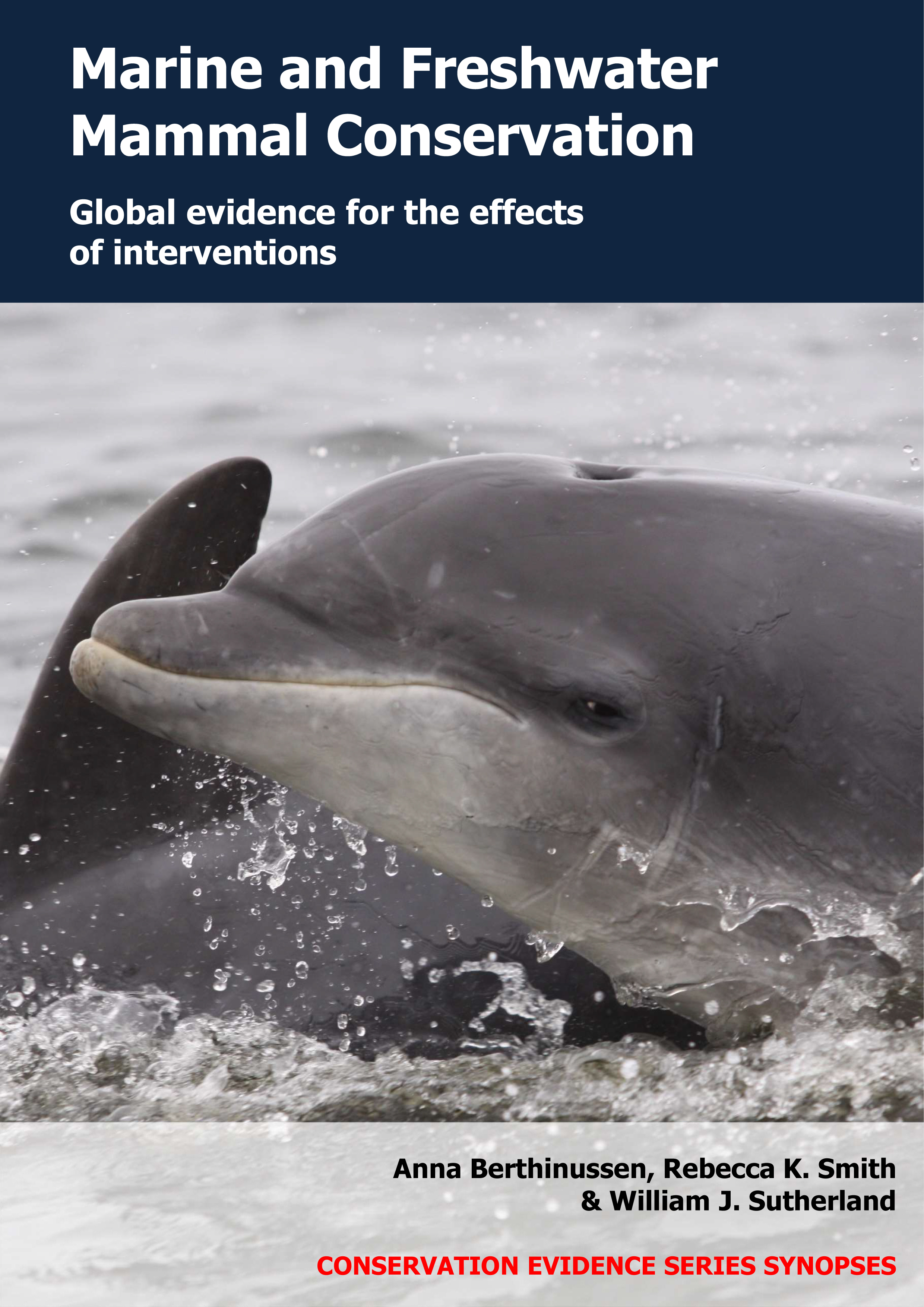Limit, cease or prohibit feeding of marine and freshwater mammals by tourists
-
Overall effectiveness category Likely to be beneficial
-
Number of studies: 1
View assessment score
Hide assessment score
How is the evidence assessed?
-
Effectiveness
60% -
Certainty
40% -
Harms
0%
Study locations
Supporting evidence from individual studies
A controlled, before-and-after study in 1988–2011 at a marine reserve in Shark Bay, Western Australia (Foroughirad & Mann 2013) found that after setting limits on feeding of bottlenose dolphins Tursiops spp. by tourists, the survival of calves born to females being fed increased and was similar to calves of non-fed females, but calf behaviour differed to those of non-fed females. The survival rate of calves born to females being fed was higher after feeding limits were set (87%) than before (23%) and did not differ significantly to calves of non-fed females (62%). However, calves of females fed limited amounts spent less time in close contact with their mothers (average 33% of their time) and more time foraging (22%) than calves of non-fed females (with mother: 39%; foraging: 16%). In 1988–2011, dolphins were hand-fed fish by tourists in knee-deep water along 90 m of beach. In 1988–1993, dolphins were fed up to 120 kg of fish/month. In 1994–2011, feeding was limited to 2 kg of fish/day during a maximum of three sessions between 07:30 h and 13:00 h. Dolphins (seven fed females with 19–22 calves, 53 non-fed females with 82 calves) were observed during feeding sessions (total 308 h) and offshore (total 2,181 h) in 1988–2011 before and after feeding was limited (number of observations before and after not reported).
Study and other actions tested
Where has this evidence come from?
List of journals searched by synopsis
All the journals searched for all synopses
This Action forms part of the Action Synopsis:
Marine and Freshwater Mammal Conservation
Marine and Freshwater Mammal Conservation - Published 2021
Marine and Freshwater Mammal Synopsis





)_2023.JPG)














